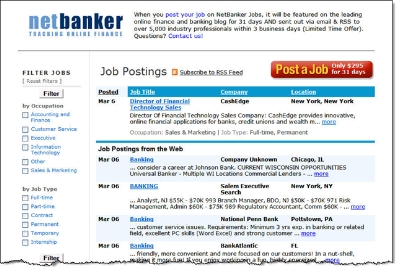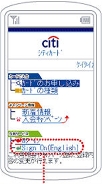 On Tuesday, Google began publishing usage information for its popular gadgets here. That's Google's name for widgets that can be imbedded on personal start pages including, but not limited to, the personalized version of Google's homepage at <google.com/ig> or PC desktops running Google desktop.
On Tuesday, Google began publishing usage information for its popular gadgets here. That's Google's name for widgets that can be imbedded on personal start pages including, but not limited to, the personalized version of Google's homepage at <google.com/ig> or PC desktops running Google desktop.
For example, I have three Google gadgets running on my XP laptop, a snow globe displaying the crummy Seattle weather conditions and forecast, a Weatherbug widget showing the conditions where I'd rather be, and a calculator (click on inset for a closeup).
Listed below are the most-popular gadgets last week (note 1) and their approximate pageviews (note 2). The only one related to financial services was a currency converter, which surprisingly was the 19th most popular gadget, with an estimated 2.8 million views last week. In addition, two other currency converters had another 1.1 million page views, bringing the category to just shy of 4 million. Use this list to generate ideas on non-financial content that could be added to your website to increase its appeal.
In the Finance category, only 10 English-language gadgets had more than 100,000 pageviews. After currency conversion, the two biggest were a stock tracker with 900,000 and a loan calculator with 500,000 (see Table 2, below).
Analysis
The growing popularity of gadgets and widgets provides an opportunity for financial institutions to develop branded gadgets for various functions, such as monitoring rates, calculating exchange rates, and tracking stock and commodity indexes (for more info, see note 1). We looked at several widgets last year including the Mortgagebot-produced mortgage rate tracker and the Mac-only bill pay tracking widget from billQ (see previous coverage here).
 Most of the gadgets at Google were developed by outsiders. In its instructions to developers, the company claims you could write a gadget in five minutes (see instructions here). Even if it took five days, the payoff could be impressive. For example, the only financial brand with a Google gadget is Quicken Loans <quickenloans.com> which posted an attractive rate tracker and payment calculator (see inset). Although its gadget had only 7,000 pageviews last week, that's still 350,000 annualized. An impressive return for a trivial programming expense.
Most of the gadgets at Google were developed by outsiders. In its instructions to developers, the company claims you could write a gadget in five minutes (see instructions here). Even if it took five days, the payoff could be impressive. For example, the only financial brand with a Google gadget is Quicken Loans <quickenloans.com> which posted an attractive rate tracker and payment calculator (see inset). Although its gadget had only 7,000 pageviews last week, that's still 350,000 annualized. An impressive return for a trivial programming expense.
Table 1: Most popular Google Gadgets across all categories
More than 100 million
131 million >>> Date & Time (only "default" gadget on Google's personalized start page)
More than 10 million
39 million >>>> Driving directions
27 million >>>> Daily horoscopes
27 million >>>> Wikipedia
14 million >>>> Word of the day
13 million >>>> Dictionary.com
More than 5 million
9.5 million >>> Search YouTube
8.9 million >>> Current moon phase
8.1 million >>> PacMan v2.0
6.2 million >>> NASA image of the day
5.5 million >>> Babelfish
More than 2 million
4.9 million >>> Google Maps
4.5 million >>> Free Sudoku puzzles
3.6 million >>> Art of the Day
3.4 million >>> Bible verse of the day
3.2 million >>> DIGG viewer (posted by Digg.com)
3.0 million >>> Simple calc
2.9 million >>> World clocks
2.8 million >>> Currency converter
2.7 million >>> IP address lookup
2.6 million >>> Hangman (word game)
2.4 million >>> National Geographic photo of the day
2.4 million >>> Calendar
2.2 million >>> My webcam
2.1 million >>> Famous optical illusions
2.1 million >>> Countdown
More than 1 million
1.9 million >>> Crossword of the day
1.9 million >>> Free text messages
1.7 million >>> Interesting photos of the day
1.6 million >>> A joke a day
1.6 million >>> To do
1.6 million >>> Local NWS radar
1.5 million >>> Google docs and spreadsheets
1.5 million >>> This day in history
1.4 million >>> Mighty optical illusions
1.4 million >>> Romantic quote of the day
1.4 million >>> Your daily horoscope
1.3 million >>> Local gas prices
1.3 million >>> Search eBay
1.3 million >>> Spellcheck
1.2 million >>> Brain teasers
1.2 million >>> US Traffic info
1.2 million >>> My Google groups
1.1 million >>> Weather by Weather.com
1.1 million >>> My IP
1.1 million >>> Today in history
1.1 million >>> Terror alert level
1.1 million >>> Braingle – daily brain teaser
1.0 million >>> Frogger
1.0 million >>> Yahoo mail
Table 2: Most popular Google gadgets in the Finance category
2.8 million >>> Currency converter (pixelmedia.nl)
910,000 >>> Stock portfolio
800,000 >>> Currency converter (donalobrien.net)
500,000 >>> Loan calculator
300,000 >>> Stockchart
270,000 >>> Currency converter (ac-markets.com)
210,000 >>> Crude oil watch
160,000 >>> Bombay stock exchange
120,000 >>> Mortgage rate watch
110,000 >>> Live gold
—————————–
Source: Online Banking Report search at Google, 1 March 2007
Notes:
1. We looked at traffic levels of the first 264 gadgets listed under "popular" at Google's gadget directory: http://www.google.com/ig/directory?synd=open&source=gpvl&num=24&cat=finance
2. Google's explanation of the pageview count:
Gadget pageview statistics are approximate only– for precise statistics, we recommend the use of Google Analytics inside your gadgets. Gadget pageviews represent the number of times that the gadget was rendered, including Google Personalized Homepage, Google Pages, Blogger, Google Desktop, and across thousands of independent pages around the web.
3. For more information on the broader subject of delivering financial services direct to the user's desktop, see our Online Banking Report #85, Grabbing Desktop Mindshare, which is a bit outdated, published in 2002, but still worth a look.
 In the article, Bank of America's My Portfolio was the first of two existing personal finance tools mentioned. The service, powered by Yodlee, was quietly launched in December and was covered in NetBanker at the time (link here) and received an OBR Best of the Web award in our final report of 2006 (OBR 137) where it was rated the third most important development of 2006.
In the article, Bank of America's My Portfolio was the first of two existing personal finance tools mentioned. The service, powered by Yodlee, was quietly launched in December and was covered in NetBanker at the time (link here) and received an OBR Best of the Web award in our final report of 2006 (OBR 137) where it was rated the third most important development of 2006. 

 I don't know how I missed this yesterday. The
I don't know how I missed this yesterday. The 



















